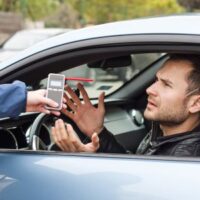Analyzing the Three Major Types of Field Sobriety Tests

The NHTSA recognizes three field sobriety tests to be used by officers to determine whether or not a driver is intoxicated. These tests assess balance, coordination, and a driver’s ability to split their attention between two tasks. These are all elements that are compromised when an individual is under the influence of drugs or alcohol. Field sobriety tests help officers determine whether or not they will make an arrest.
However, these tests are not perfect. They’re based on the subjective assessments of the officer who is administering the test. In this article, the Orlando DUI attorneys at FL DUI Group will discuss the three types of field sobriety test and how they are administered.
HGN or horizontal gaze nystagmus
Horizontal gaze nystagmus refers to the involuntary jerking of the eyeball when the eyes are rotated at high peripheral angles. This happens to everyone. However, when a person is intoxicated, the jerking of the eyes becomes more pronounced and occurs at lesser angles.
During the HGN test, the officer will ask the driver to follow a moving object (like a pen or flashlight) slowly from side to side. The officer is looking to determine:
- If there is distinct jerking of the eye at maximum deviation
- If the angle of jerking onset is within 45 degrees
- If the driver’s eye cannot follow the object smoothly
Authorities believe that if the officer spots four or more clues between the two eyes, the driver is likely to have a blood-alcohol content (BAC) of .10 or more. Research from the NHTSA indicates that this test is accurate in 77% of cases.
Walk and turn test
The walk and turn test involves the officer asking the driver to take 9 steps, heel to toe, along a straight line, then turn one foot and return 9 steps in the opposite direction. During the test, the officer is looking for several indicators of inebriation. These include:
- Beginning before the instructions are finished
- Difficult keeping balance while listening to instructions
- Failure to touch heel-to-toe
- Loss of balance while turning
- Stopping while walking to regain balance
- Take an incorrect number of steps
- Use of arms to maintain balance
The NHTSA believes that if a driver exhibits two or more of these indicators, there is a 68% likelihood that their BAC is .10 or higher.
One-legged stand
For this test, the officer will ask the driver to stand with one foot elevated about 6 inches off of the ground and count until the officer says to put the foot down. During the next 30 seconds, the officer will be looking for signs of impairment, including:
- Hopping to maintain balance
- Putting the foot down
- Swaying while balancing
- Using arms to balance
According to the NHTSA, if a driver exhibits two or more of these indicators, there is a 65% chance they have a BAC of .10 or greater.
Talk to an Orlando DUI Attorney Today
FL DUI Group represents the interests of Orlando residents who have been charged with DUI or DUI-related offenses. Call our Florida DUI defense lawyers today to schedule an appointment, and we can begin preparing your defense immediately.








